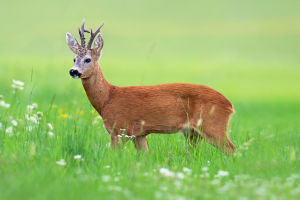Kingfisher's Secrets
The Common Kingfisher (Alcedo atthis) is a spectacular bird that captures the imagination with its vivid plumage and expert fishing skills.
Found across Europe, Asia, and North Africa, this small bird, measuring about 16-17 cm in length, is a marvel of natural adaptation. Here are five fascinating facts about the Common Kingfisher:
1.Spectacular Plumage:
One of the most striking features of the Common Kingfisher is its colorful feathers. The upperparts are a brilliant turquoise blue, while the underparts are a vibrant orange. This eye-catching coloration not only adds to the bird’s beauty but also serves a practical purpose. The bright colors help the kingfisher blend into the vibrant environment of its habitat, where sunlight reflects off the water and surrounding vegetation, providing camouflage.2.Masterful Fisher:
True to its name, the kingfisher is an exceptional fisher. It hunts by perching on a branch over water and watching intently for fish. When it spots a target, it dives with remarkable precision, plunging into the water at speeds up to 40 miles per hour. The kingfisher’s sharp, pointed beak is perfectly adapted for catching fish, and its keen eyesight allows it to detect even the slightest movements in the water.3.Unique Diving Technique:
The kingfisher’s hunting technique is a marvel of nature. Before diving, the bird hovers briefly over the water to gauge the depth and location of its prey. It then tucks its wings and dives headfirst into the water. Its streamlined body and specialized feathers ensure minimal resistance, allowing it to plunge swiftly and capture its prey with minimal splash.4.Distinctive Call:
The Common Kingfisher is also known for its distinctive call, which is a series of sharp, high-pitched notes. This call is used for communication between individuals, especially during the breeding season. It also serves to establish and defend territory. The call can often be heard echoing through river valleys and along lake shores.5.Intriguing Nesting Habits:
During the breeding season, the female kingfisher excavates a nest burrow in a riverbank or a sandy bank. The nest is lined with fish bones, which help to deter predators and keep the nest clean. The kingfisher's nest is typically located several feet underground to provide protection from predators and environmental conditions.Lykkers, the Common Kingfisher’s vibrant appearance and adept fishing skills make it a fascinating subject for birdwatchers and nature enthusiasts. Its colorful plumage and expert hunting techniques highlight the intricate beauty and efficiency of nature’s designs.


